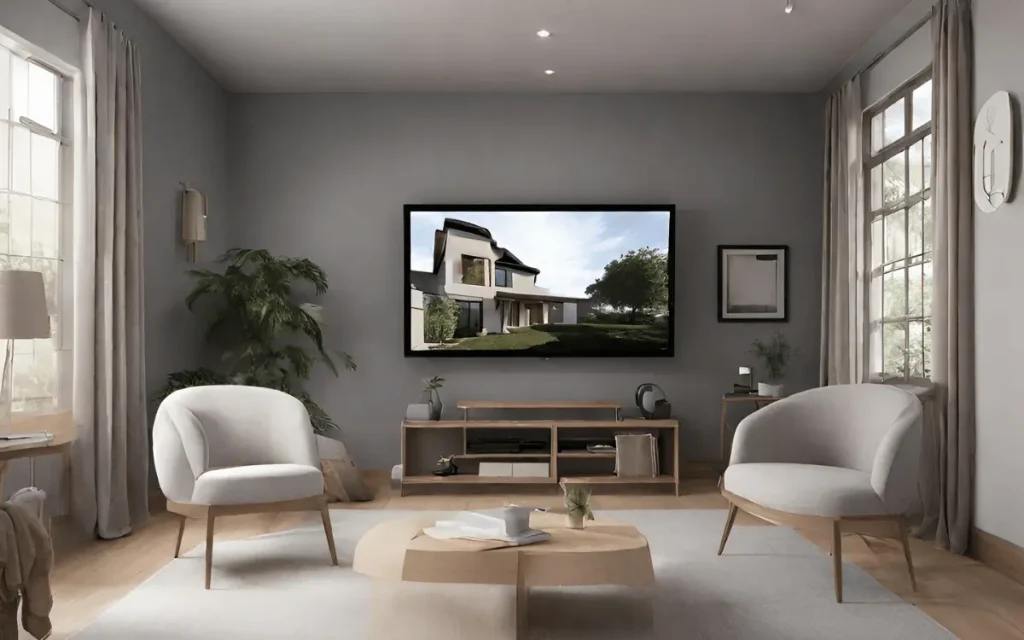
Virtual reality in real estate is a tool that changes the way how properties are shown, used in marketing, and experienced. Let’s find out how rendering tools can help to change vision and VR’s importance in the real estate industry for a deeper exploration of its applications and implications.
Understanding Virtual Reality in Real Estate
A virtual reality environment is a computer-generated simulation that creates a space of property with customer requirements. Users can walk through and see the apartment as if they were actually walking there. In the context of real estate, 3D virtual reality lets buyers, renters, and investors make a virtual tour of properties from the comfort of their own homes, offering a realistic viewing experience.
The adoption of VR technology in the real estate sector has experienced powerful growth in recent years, fueled by advancements in hardware, software, and accessibility. Originally, VR applications in real estate were limited by technological limitations and cost barriers. However, with the development of more affordable VR devices and the increase in content creation tools, VR has become accessible to both real estate professionals and consumers alike. As a result, VR has transitioned from being a novelty to a mainstream tool in the industry.
Types of VR Applications in Real Estate
The use of virtual reality can be different in the context of real estate. Here are the main types that can help you understand better why it’s important to use modern tools.
1. Virtual Property Tours: VR allows users to make virtual tours of properties as if they were present in the space. Using VR headsets or web-based platforms, you can explore different rooms, and navigate through floor plans, allowing you to see the property from various angles and make decisions.
2. Virtual Staging: Using virtual staging you can easily decorate the room with any furniture you want. Is an amazing tool that helps you save time and money when talking about making property alive. You don’t need to buy or rent furniture, just connect to 3d rendering company and decide what your desired design is. The power of 3D technology transforms empty spaces into fully furnished environments.
3. Architectural Visualization: VR technology can be used in architectural visualization to show designs and developments in the best way. Architects, developers, and urban planners can use VR to showcase architectural designs, landscapes, and construction projects, letting stakeholders explore and assess design concepts before they are built.

Advantages of Virtual Reality in Real Estate
Enhanced Property Visualization and Immersion
Virtual reality has a high level of realism. You have probably heard about VR glasses from major technology companies. A lot of people already made reviews for that, and most of them can say that this is a completely different level, from moments when 3d technologies just appeared, by providing a fully interactive and wonderful experience. So, let’s say, you can not only see what the property has, but you can also make changes, such as the color of the walls, furniture, and lighting. All this creates a new generation of uses VR in real estate.
Improved Remote Property Tours and Accessibility
One of the key factors of VR in real estate is its ability to simplify remote property tours. For example, you live in Wisconsin and want to buy a house in Florida, of course, it might not be a huge problem to take tickets to a plane and fly to Miami, but is this so necessary if you can choose a house using just VR tools and a connection to the internet. No need to spend time and money.
As choosing a house is very important, you can check through VR what your favorite house is and come to see it in real life just once. No need to come over every weekend. This is a way of simplifying. All buildings are as real as you are walking in your house. With VR technology, you can see properties from all around the globe. This raises accessibility in property marketing by offering convenient and flexible viewing options.
Increased Efficiency in Design and Development Processes
Besides benefits for property marketing and sales, VR technology can truly improve the efficiency of design and development processes in the real estate industry. Architects, developers, and urban planners can use VR as a significant tool for conceptualizing, prototyping, and designing.
By creating virtual models of proposed developments, it’s easier to make decisions because all sides can visualize and see design concepts in a realistic environment, identifying potential problems and making decisions early in the development lifecycle. This method not only saves time and resources but also minimizes the risk of costly revisions and delays during construction
Conclusion
Virtual reality technology has become a game-changer in the real estate industry, completely changing the way properties are shown and marketed. The concept of virtual reality in real estate encapsulates the creation of computer-generated simulations that totally imitate properties, giving consumers a lifelike experience of exploring spaces, even from their own homes.
The quick adoption of VR technology within the real estate sector underscores its importance and relevance in today’s market. What once seemed like a futuristic concept has now become an integral part of property marketing strategies. VR continues to expand and become more accessible; it has changed from being a novelty to a mainstream tool, providing both real estate professionals and consumers with innovative ways to showcase and experience properties.
In conclusion, the advantages of virtual reality in real estate are multifaceted and far-reaching.









